
By: Mangku Purnomo
Debate on Indonesian rural economy transformation and the rural poverty in academic sphere was begun by Dutch scholar in the late of Dutch colonialism. J.H. BOEKE (1953) present “Dual Economy Theory” to capture the condition of economy in which rich, capital-intensive modern sectors exist in the same model as comparatively poor, traditional, and labour intensive sectors. He followed and completed the FURNIVALL (1939) theses that there was unchangingly mercantilist in the Dutch colony because of protectionist intent of Dutch colonial economic policy through isolating native society from international economic and politic activities (R.E. ELSON, 2007; ADRIAN VICKERS, 2004). According to BOEKE theses, dual economy is formed by the coexistence of peasant subsistence agriculture or native economy and cash production or plantations estate in the same economic sphere. Introducing capitalist mode of production that articulated by the modern economics system (estate plantation) by Dutch colonial on traditional economic system (subsistence agriculture) make native economy became separated and coexisted. Modern economic has absorbed rural economy resources through serving cheap labour wage and food to support estate plantation enterprise[1]. Therefore, rural economy could not growth. AMRI MARZALI (1986:10) told that condition as “static expansion” or the condition that farmers did not improve their agricultural economy though modern sector growth rapidly. It was believed as a main cause of poverty in the subsistence agriculture.
Dual economy theory was criticized by several subsequence scholars who condemn the stagnation condition is given. Despite subsistence agriculture was extracted by modern economics, it remains growth with the high dependence. Additionally, the basic assumptions of subsistence economy in particularly a limited want of eastern society that make stagnation happen as a peculiarly phenomenon had no relevant evident. Easterners behaviour economic are not intrinsically different with westerner. The peculiarly phenomenon in eastern economic also appear in western in certain condition (HIGGINS, 1956). The pessimistic sight of eastern chances to improve their economic become modern because of lack motivation of local entrepreneurs to gain economy benefit also was exaggerated. Case in
CLIFFORD GEERTZ (1963) gave more realistic analysis to rural economy transformation by which included social stratification aspect into analysis despite his explanation did not involve the technological changes in rural area because of green revolution program that offered by Indonesian government. He introduced theory of “agricultural involution” to explain the situation in which native economy remain grow though the Javanese economy faced with external pressure from the economic demands of the Dutch colonial regime and internal pressure from rapidly increasing population. The growth came from intensified existing forms of agriculture rather than changing native economy become capitalist. His famous concept was “shared poverty” or a mechanism to share the benefit from the agriculture among social strata[3]. Social norm shaped the share mechanism as apart of rich farmer responsibilities to manage social stability as a cultural identity of Javanese social system. ELSON called GREERZT contribution as the standard portrayal of the unhappy impact of Dutch colonial policy in rural Java, and the concept of agricultural involution the regnant explanation of long-term Javanese rural poverty[4].
Agricultural involution theory got criticism from Indonesian and foreigner scholars because it did not adequate to capture the polarization phenomenon in rural structure[5]. The new technology inducting to the agricultural economy such as the rise milling, hand tractor, and good seed deprived labour demand. Rural entrepreneurs were not appears particularly from rich people who could make use of green revolution and other development policy that introducing by government. Increasing cash economy activities and labour wage system leaded the rich farmer to make business calculation so that caused the poorest farmer could not access benefit from the agriculture system easily through traditional institution especially in harvesting system[6].
In the other hand, the evolution of the rural economies has diversified opportunities for farmers to enter to the other livelihoods because of increasing off-farm opportunity that appear from inside or outside rural economic system[7]. Double and triple cropping of land has sometimes boosted production by significantly raising the cropping ratio even in the context of declining landholdings coincidentally with the use of new agricultural technologies such as chemical fertilisers, new crop varieties. It was not captured by agricultural involution theory that viewed rural society as a static matter particularly to spread the economy activities out to social system. GEERZT did not calculate this fact in his analysis actually it plays the main factor on the impoverishing process in rural area later. ELSON (2007) had two reasons why agricultural involution had been discounted and generally rejected both the picture of Javanese agricultural stagnation was not realistic and the new generation of scholars began to appear with the new idea about rational choice model of action that gave the peasant more autonomous to choice their action[8].
In the same time, in the Pacific area appeared new term to understand the transformation process in rural area that are ‘social production’ and ‘trade production’ to incorporate both traditional and new production demands as a social process. He was Harold Brookfield, the geographer from the
After the end of agricultural involution, debate on agricultural transformation pattern (AT) in Asia Pacific particularly in Indonesia that related with the position between poorest people and agricultural activities was split in two opinion that are differentiation and polarization theory. Firstly, the differentiation idea believed that rural structure become more complex signing with multi rank of social class because of population pressure and technological stagnation after green revolution on rural economy. The process of modernization didn’t exclude the low social class directly because they can access benefit of agricultural surplus from the upper class/landlords that called “Patron Client” mechanism[11]. This relationship was endorsed by social norm as a responsibility of rich farmers to share their surplus that based on the principle helps and income sharing particularly in labour-employment in harvesting works. New institutions called “CEBLOKAN” appear to shape it relationship as a mechanism both to adjust the volatility of wage prices reducing landlord income in the labour market and give poorest people access to rural resources. If GEERZT believed that the poorest will be take care by social system through complex relationship without social mobility, the critics believed that polarization did not appear but replaced by multi rank stratification as an impact of differentiation process. Secondly, the polarization theory refuses the notion that the impact of rural economy transformation was only on the more complex social stratification. In the fact, landless escaped from farming system or become labour with low wage. The exclusion process signed by the distant income between landlords and landless occurred and skewed.
Debate between polarization and differentiation was refused by subsequence scholar because of the fault assumption about the role of agricultural land in the process of impoverishing and the emerging role of non rural livelihoods. Contemporary small farmers are in many ways now a part of world economy, producing crops for exchange and sale, purchasing household goods as well as seeds and fertilisers, sometimes abandoning subsistence production and engaging non-farm activities. Production today includes subsistence, exchange, trade that is internal, regional and global. Additionally, migration (temporary/permanent or regional, local and international) become new trend in almost rural area. Remittance changes formation of resources structure in the rural economics in which land becomes diminished. Therefore landless households can fine other resources and accumulate other capital to secure them household economics without land[12].
Polarization and Patron Client System
Recently, nevertheless the contribution of land to generate the rural economy becomes weak, many evident showed by several scholars invigorate argument that land has had close relationship with impoverishing process. BREMAN and WIRADI (2002) showed that land still an important resources in rural area tough non farm sector that appears because of growing of urban industries reveal their role. Unfortunately, almost opportunity came from an extra local did not open new opportunity in rural area. When the urban sector declined (case of monetary crisis “KRISMON/KRISIS MONETER” in 1998), almost migrant workers enter to the rural labour market while the rural economy still stagnant. In this period, publication and debate of poverty and access to land by Indonesian scholar that used updated frame work in agrarian change debate was limited because of less information and lacking many libraries to provide the international journals and books[13].
Other critic came from the JONATHAN PINCUS, a neo-marxism economist, addresses the differentiate way to define the well being that commonly was used by others scholar by the composite household ownership of durable goods. Land was still main household means of production that differ between rich farmers, labour wage, and small holders. Control on durable resources shaped the relationship between household. So, this reflects the massive differences between rich farmers and wage labourers and small-scale farmers. To explain the role of off-farm and wage labour as a significant factor in the process of differentiation, he note that local institutional which it appears to replace the harvesting system called “CEBLOKAN” was not the fixed matter. It depends on the relative bargaining power of classes and historical factors specific to each village. The variability of wage arrangement and real wages was as a result of the local configuration of classes and class capacities. So, the poverty problem depends on how the distribution of economic and political power at the local level was shared among small farmers and wage labours. Where does the prospect of rural economy in the future and the chance of poorest household in face of forthcoming gloomy situation in face of resources scarcity?
Is Peasantry Beyond Agrarian Transition
According to the state of the dualism, differentiation, and polarization debate above, I will focus on the relationship between land and poverty as a central debate in the agricultural economy transition. Same scholar believed that poverty in rural area has not been related with resources because of the massive changes in rural livelihoods that called as “DEAGRARIANIZATION”. Expanding work opportunities in the non-agricultural sector, the longer periods of education and the formation of a more rigid boundary between agricultural and non-agricultural work, decrease pressure on the rural labor market, migration, full integration between local and regional even international market, lead the process of de-linking land with the rural poverty (BRYCESON, 1996, BARRETT, ET, AL., 2001, EVANS, et al., 2002, WIILSON and RIGG, 2003, RIGG, 2005). Despite they are influenced by
According to the neo-Marxism perspective, the process of agrarian transition was signed by the peasantry differentiation from the static unit of economies, self-sufficiency, and based on the family or household unit of production to more commercial orientation and dependent on market. In developing countries peasant was a low class in the agricultural systems on the feudal, semi-feudal, pre-capitalist, non-capitalist and transitional period. On the process of industrializes, peasants as a class have tended to disappear because of the massive process of mechanization of farming, the consolidation of farming plots into larger units, and the emigration of rural dwellers to the cities, and the cultural changes that subsequence the industrialization. Debate on peasantry to capture such tendency in agrarian change from pre-capitalism to recent condition on political, cultural, economical, and in numbers of places was presented by BERNSTEIN and BYRES[15].
To depict such de-linking agriculture and the poverty, RIGG (2006) called this condition as “farming in the process of losing its resonance and significance for the rural poor”. Case on
Additionally, according to the National Farmer’s Panel (PATANAS) was conducted by Indonesian Ministry of Agriculture, agriculture contributed 58.9-98.4% in all survey areas. High contribution up to 50% only appears in the wetland areas that have wider land. In conclusion, all of households had more that 2 sources of income-it means non farm income plays the significant role in the recent Indonesian rural economy (PATANAS: 2007). Even, (COLLIER, ET, AL., 2006) found that although landlessness is increasing, the unemployment of landless people is not a serious problem with the increases in employment outside the rural villages. They note there are various types of economic activities such as migration, small industries, and others that are carry out by farmer. If the agriculture is losing its resonance and significance for the rural poor, how poverty reduction had been created?
In the fact, World Development Report 2008 noted, three of every four poor people in developing countries live in rural areas and most depend on agriculture for their livelihoods. There were 2.1 billion people living on less than $2 a day and 880 million on less than $1 a day. Before these publication, DFID (Department For International Development) noted, despite rapid urbanisation, an estimated 70 to 75 per cent of the world’s poorest people (the 1.2 billion living on less than $1 per day) live in rural areas with their livelihoods largely dependent on agriculture (DFID, 2002:6). Although agricultural had a limited potential contribution to poverty reduction, it has strong institutional linkages from the local to the national and the international level. Not only how much it sector contribute to the national and international economy, but also the multiple connections it sector to the economic growth, environment, equity and poverty.
Beside that, on the local area, BREMAN and WIRADI (2002) noted that relationship between non agriculture income and the agriculture activities can not suspicion as a simple ties. Actually, when the urban economy be come crisis, migrant from the village who work in the non farm activities in particularly un-skill labour enter to the village labour market. FERIDHANUSETYIAWAN (325-326), during the crisis period, agriculture turn out to be a saviour the economic in labour absorption, with an increase of 13.3%. They came from non-tradable sector especially infrastructure, the inefficient financial sector, and highly import-dependent manufacturing sector. Although the movement of un-skill labour to the agricultural sector did not last long, in prove that agriculture was the vital means of survive to un-skill labour in the skewed economy[16].
Additionally, according to cases in northern
Next Debate
Al of that contradictions lead the scholar to earn more adequate explanation. Incomes and welfare in rural areas were based on natural resources, but they are accompanied with other opportunities on non farm sector. On the other side, resources now are in faces of the worst condition because of the rapid environmental changes. Additionally, to capture the social problem that related whit the environmental changes tend to include the multi approach and inquiry. One perspective explanation often fail and not precise to explain the complex relationship between social system and environment.
[1] Adrian Vickers, 2004, The Classics in Indonesian Studies: J.S Furnivall’s Netherlands India. This paper was presented at the 15th Biennial conference of the Asian Studies Association of Australia, in
[2] Hideo Yamada, Boeke’s View of Eastern Society: With special referent to His Critics, The Developing Economics,
[3] Lawrence Hammar, 1988, The Philosophy of Shared Poverty: rethinking Agricultural Involution and the Culture of Geertz, Journal of Historical Sociology Vol. 1 No. 3 September 1988
[4] Elson, 2007, Bulletin of Indonesian economics studies, volume 43 issue 2, 2007
[5] Benjamin White, 1983, Agricultural involution and its critics: twenty years after Geerzt, Working papers series no. 6, Institute of Social Studies, Hague
[6] William L. Collier, “Declining labour absorption (1878-1980) in Javanese rice production”, Kajian Ekonomi Malaysia 16 (1979), p. 134.
[7] Sajogjo, 1973, Dilemmas in Modernization Without Development in Rural Java (mimeo),
[8] Ibid. R.E. Elson, 2007
[9] Paula Brown, 2007, Of Harold and Chimbu revisited, Asia Pacific Viewpoint, Vol. 46, No. 2, August 2005
[10] Benjamin White, 1973, Demand for Labour and Population Growth in Colonial Java, Human Ecology, VoL 1, No. 3, 1973
[11] Masao Kikuchi, Anwar Hafid, Chaerul Saleh, Sri Hartoyo, and Yuziro Hayami, 1980, Class differentiation, labour employment and income distribution in West Java Village, World Development, Volume 18, Issue 1, 1980, Pages: 45-64
[12] Jonathan Rigg, 2006, Land, Farming, Livelihoods, and Poverty: Rethinking the Links in the Rural South World Development Vol. 34, No. 1, pp. 180–202, 2006
[13] Ben White, 2005, 178-179, Java and social theory; Agrarian debate past and present, in Java that never was, Academic theories and political practise, Southeast asian dynamic, 2005, edited by Hans Antlov and Jurgen Hellman,
[14] BRYCESON, 1996, Deagrarianization and Rural Employment in sub-Saharan Africa: A Sectoral Perspective, World Development, Vol. 24, No. 1, pp. 97-l 11,1996
[15] BERNSTEIN and BYRES , From peasant studies to agrarian change, journal of agrarian change vol. 1 no. 1 January 2001 pp. 1-156.
[16] TUBAGUS FERIDHANUSETYIAWAN, 2003, Labour Marker in
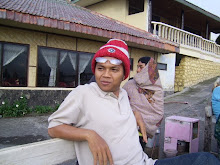
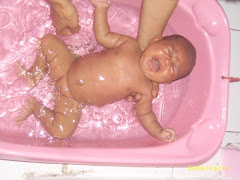
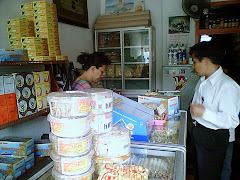
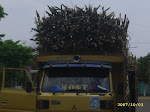
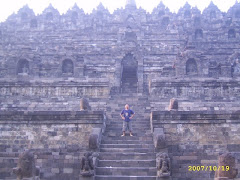
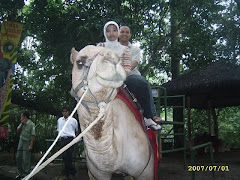
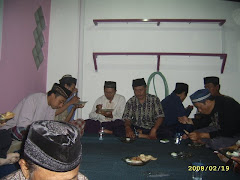

Tidak ada komentar:
Posting Komentar